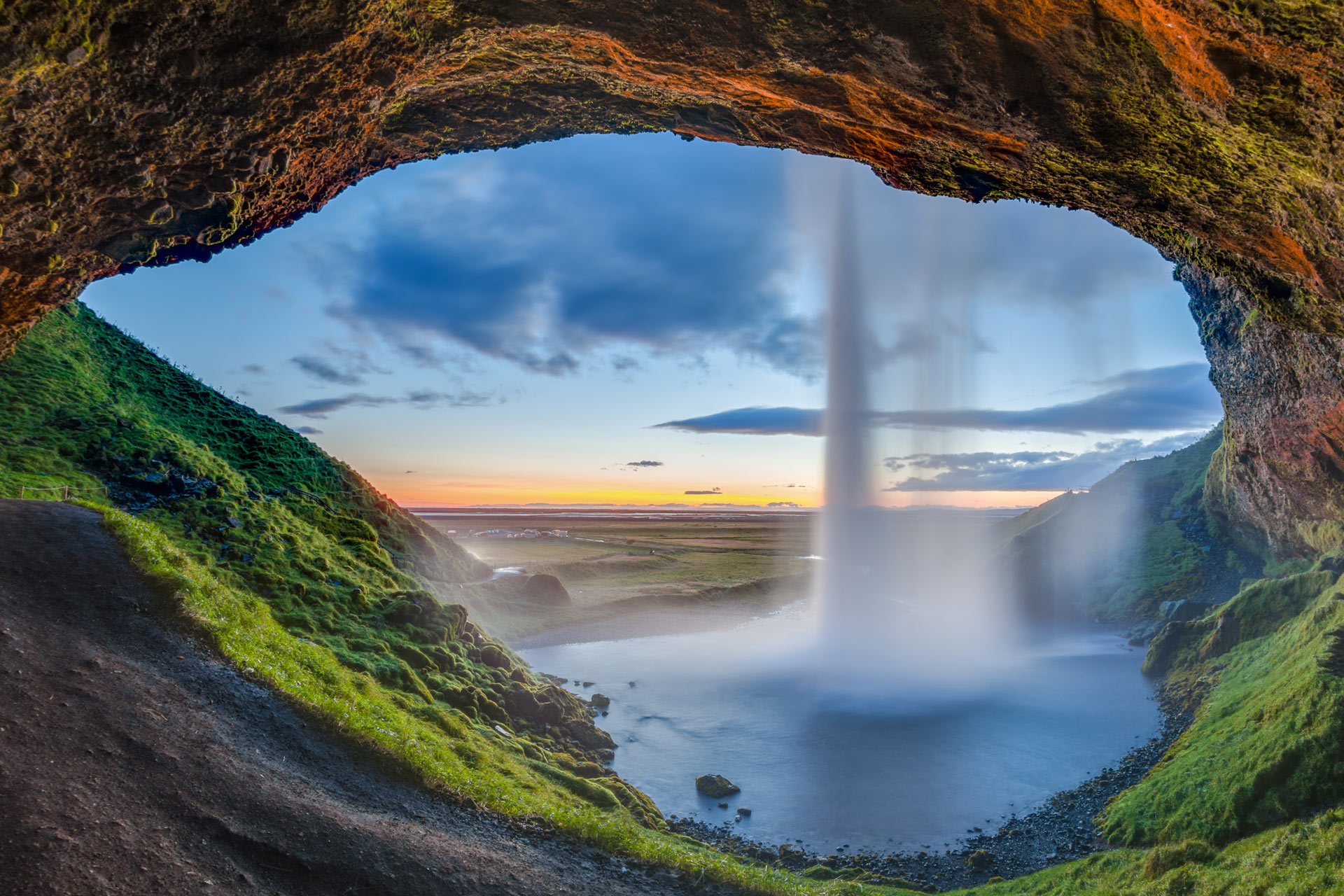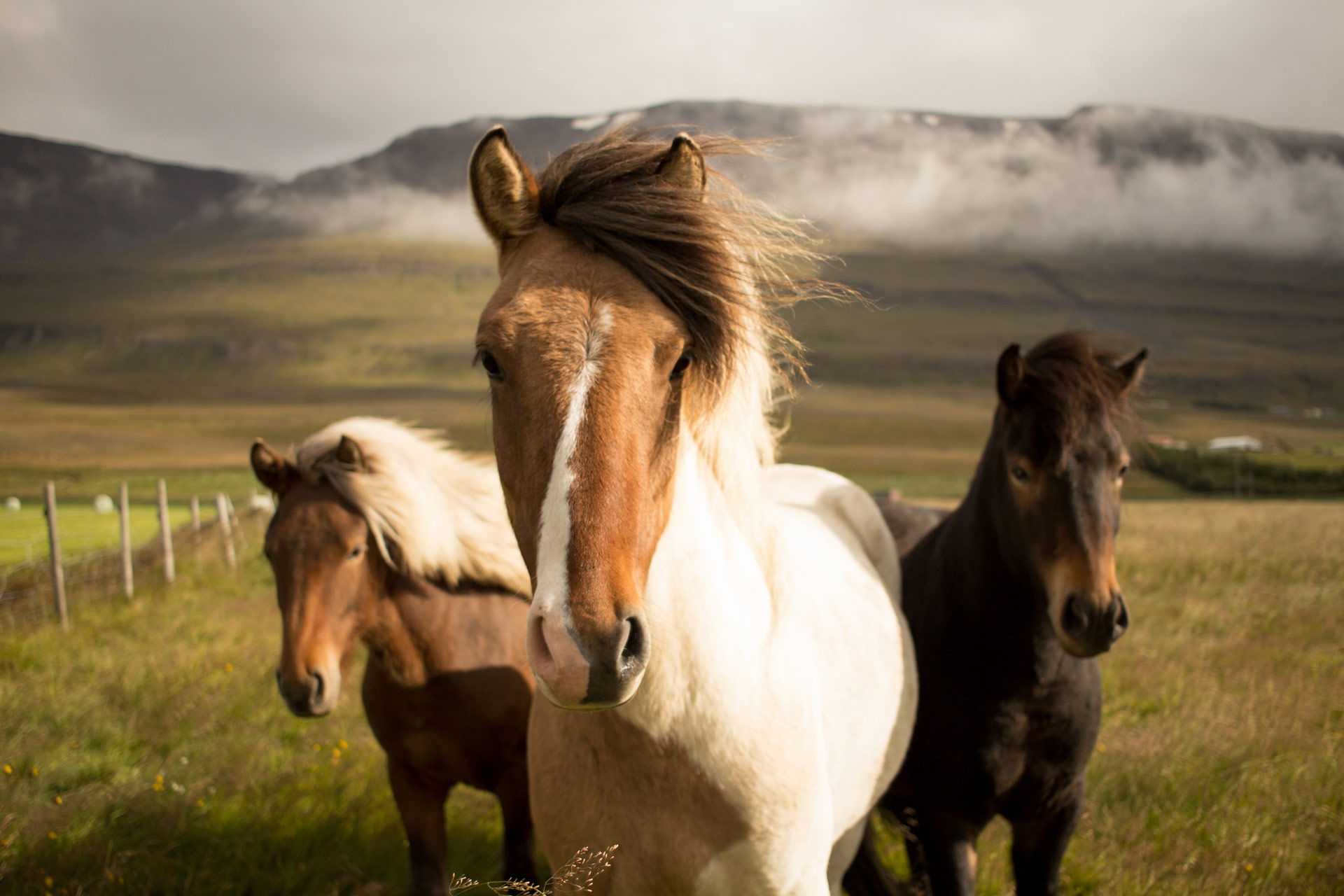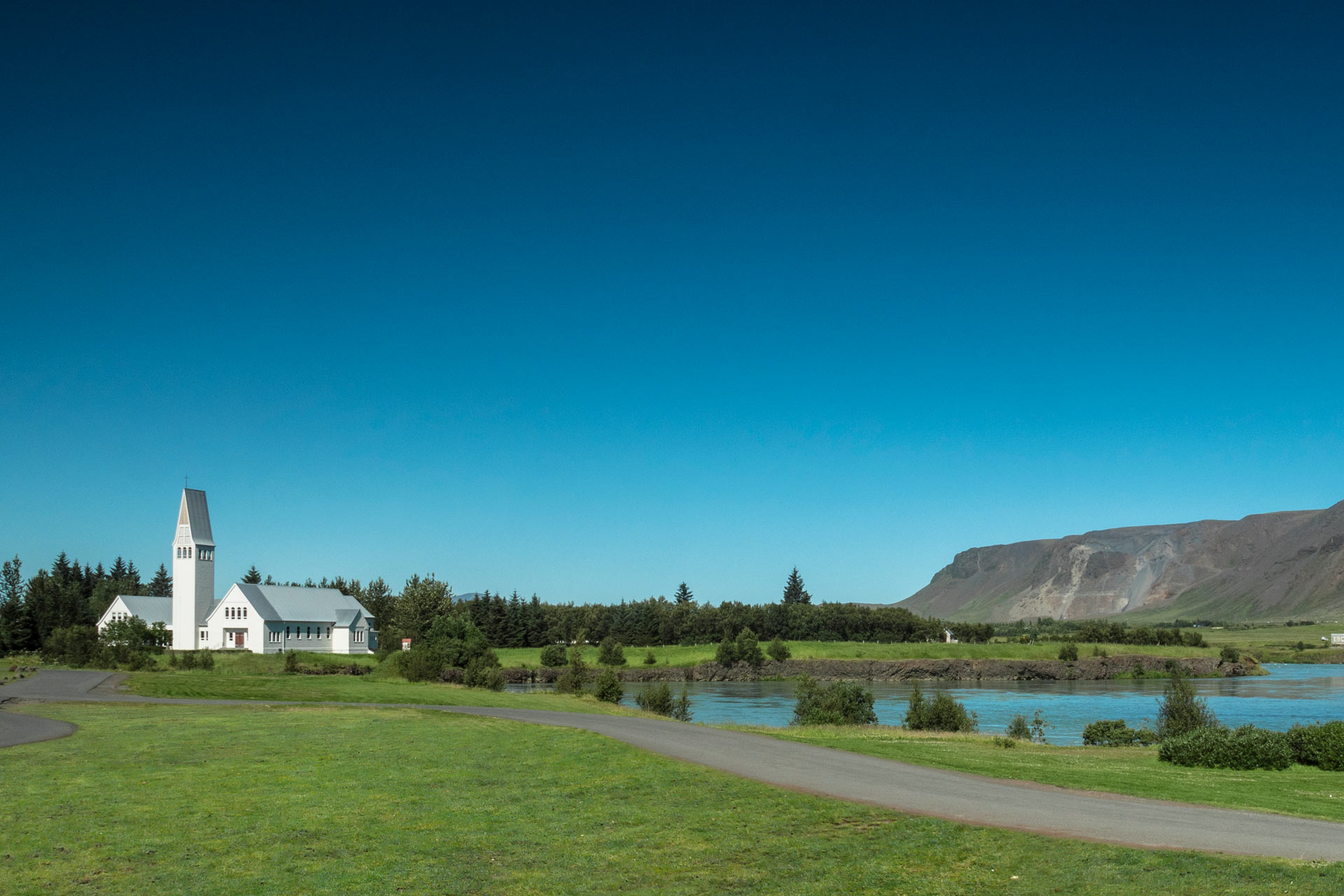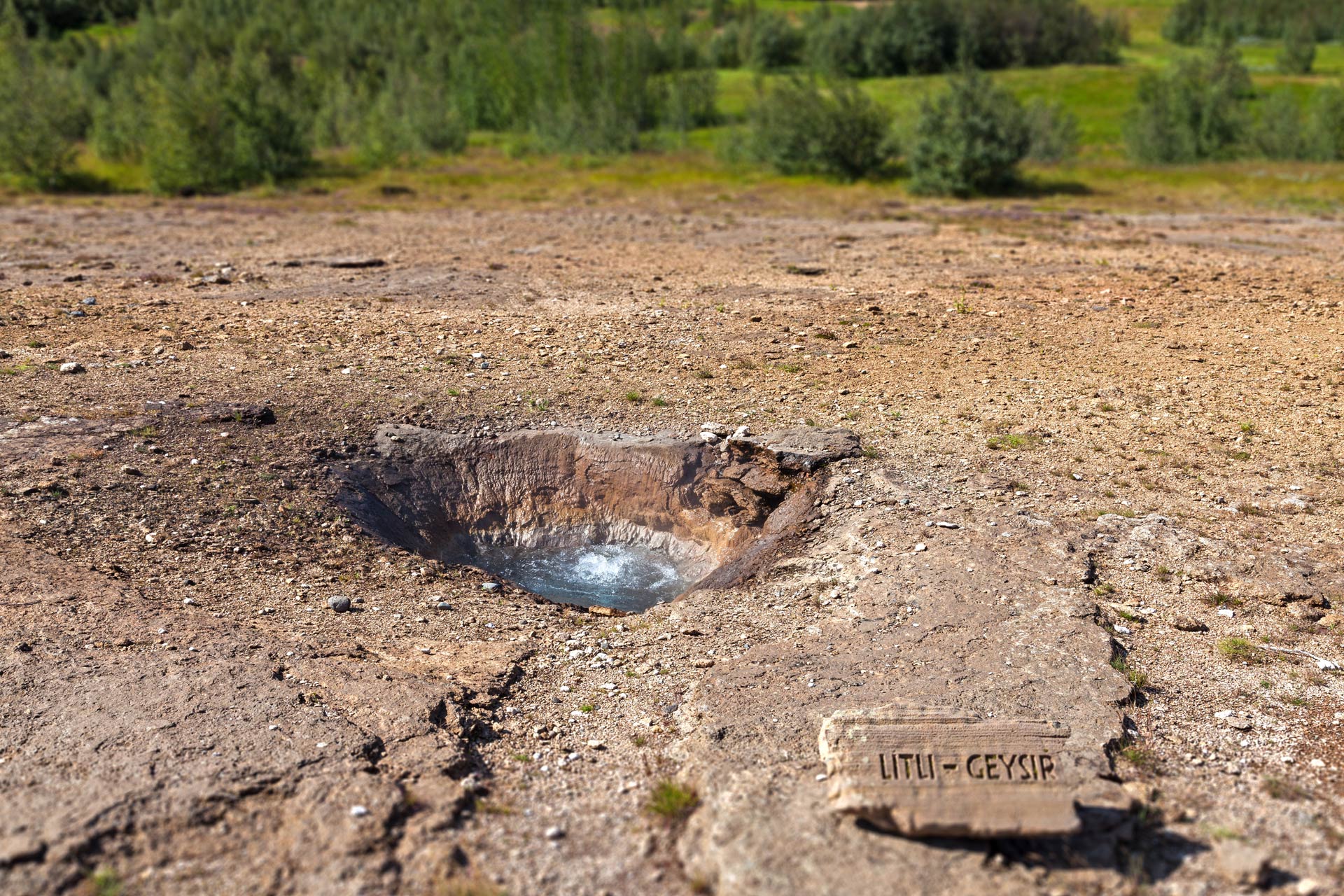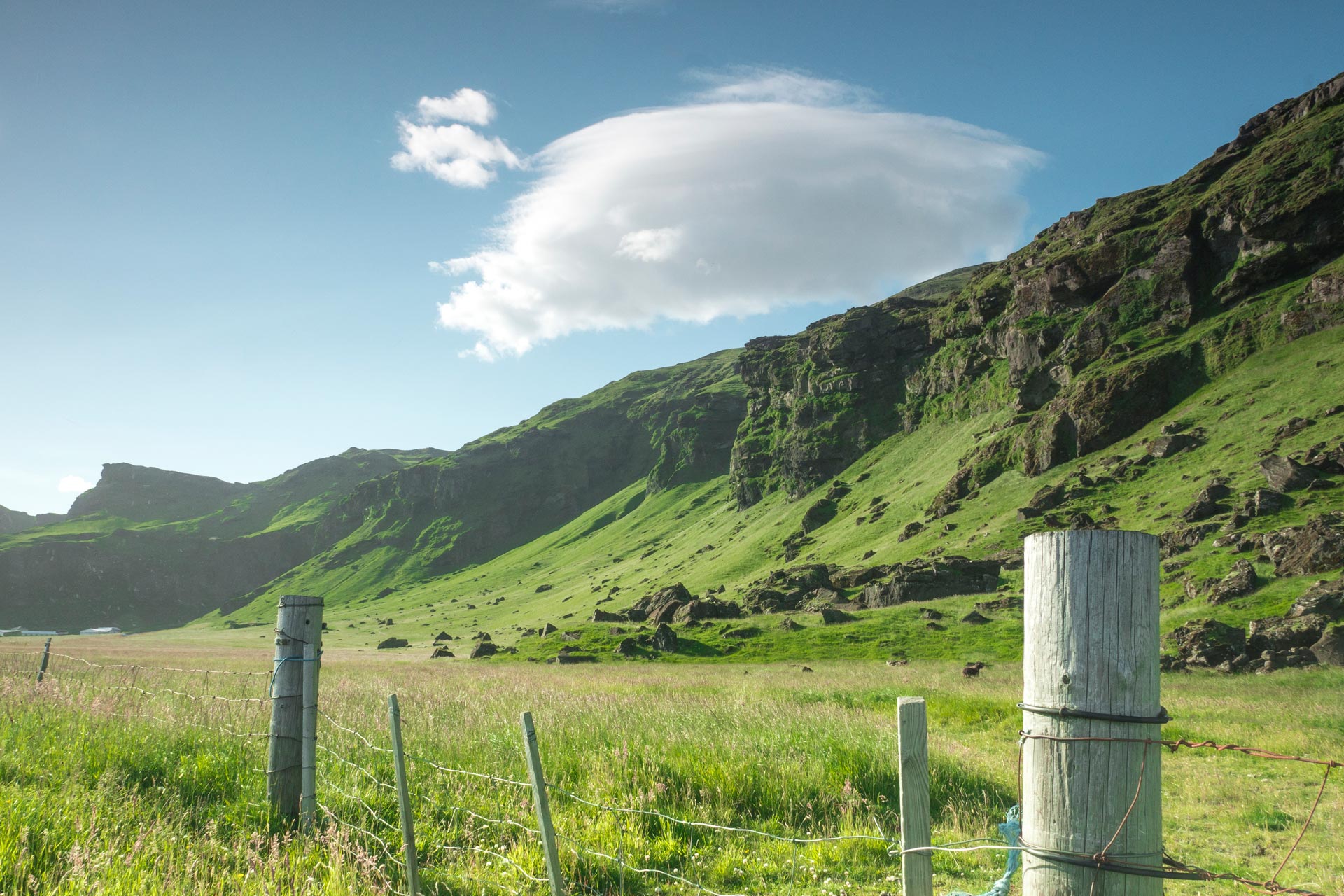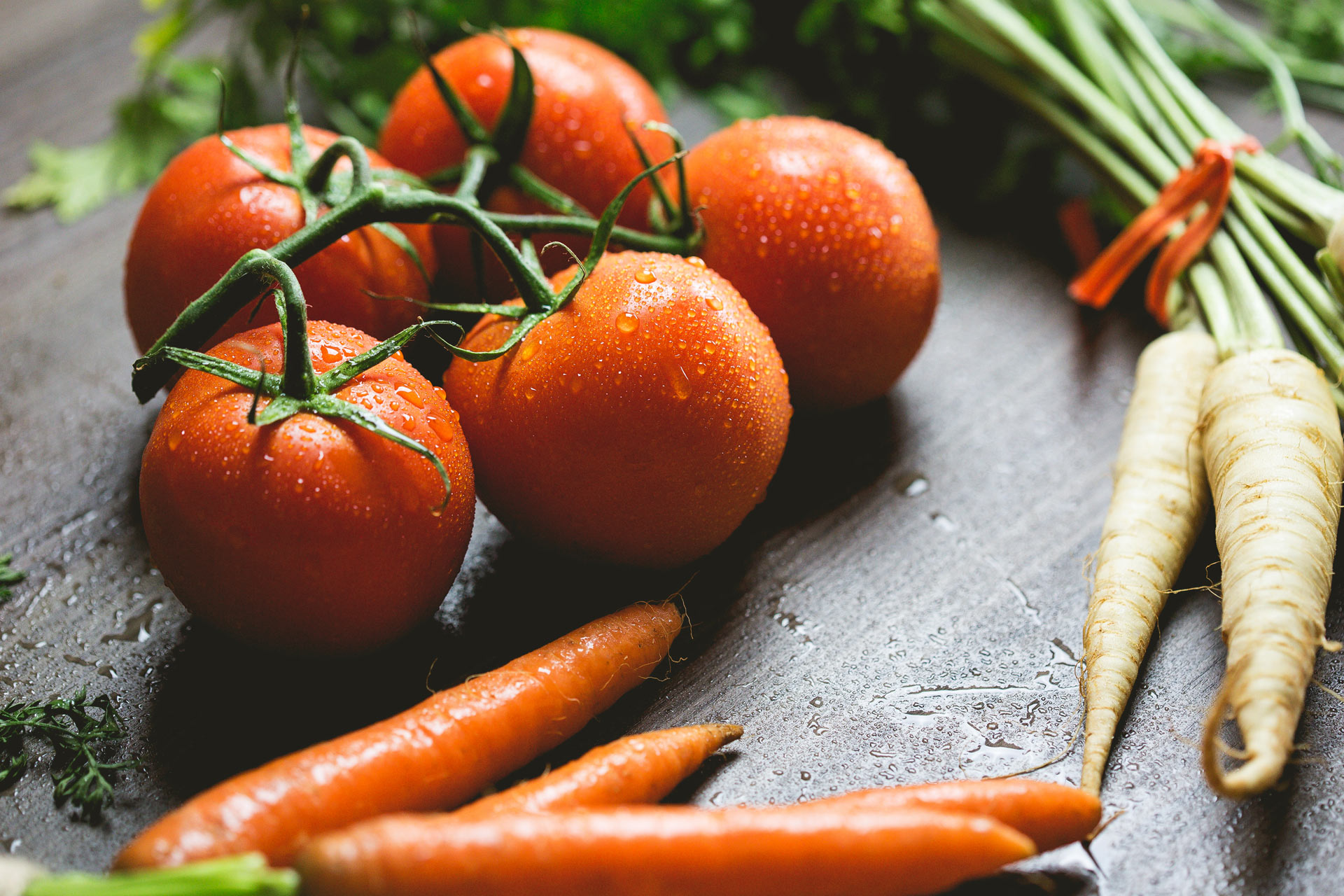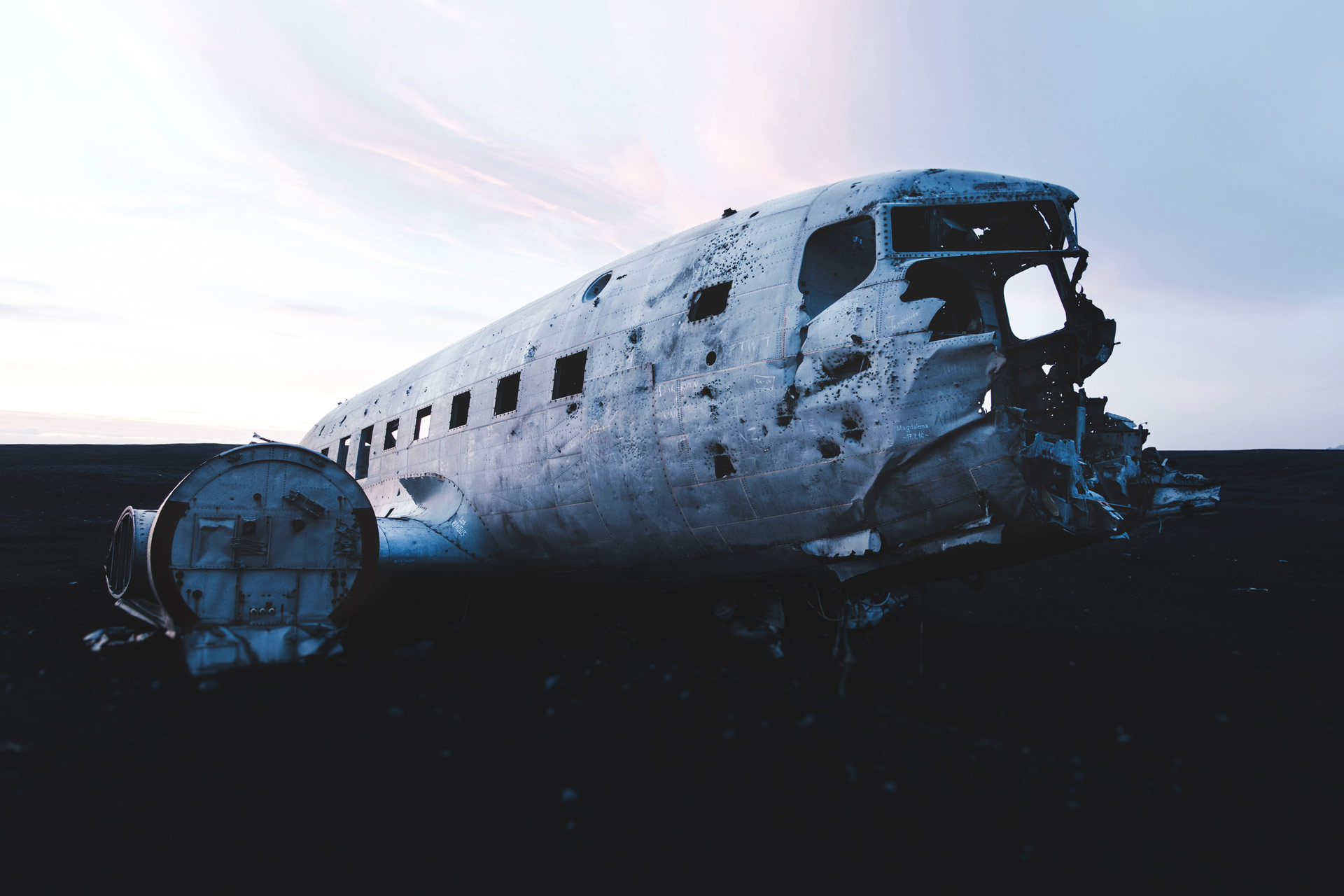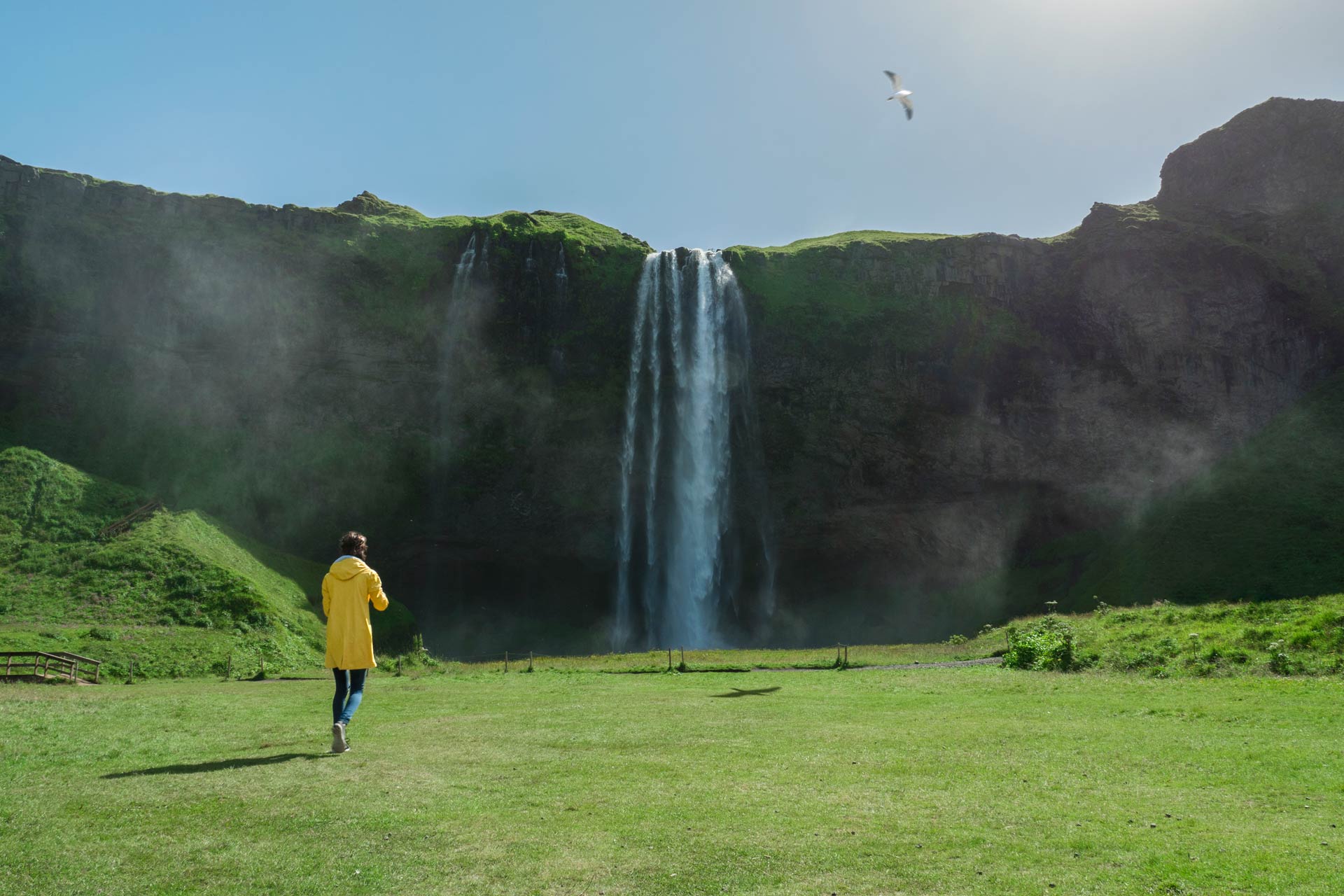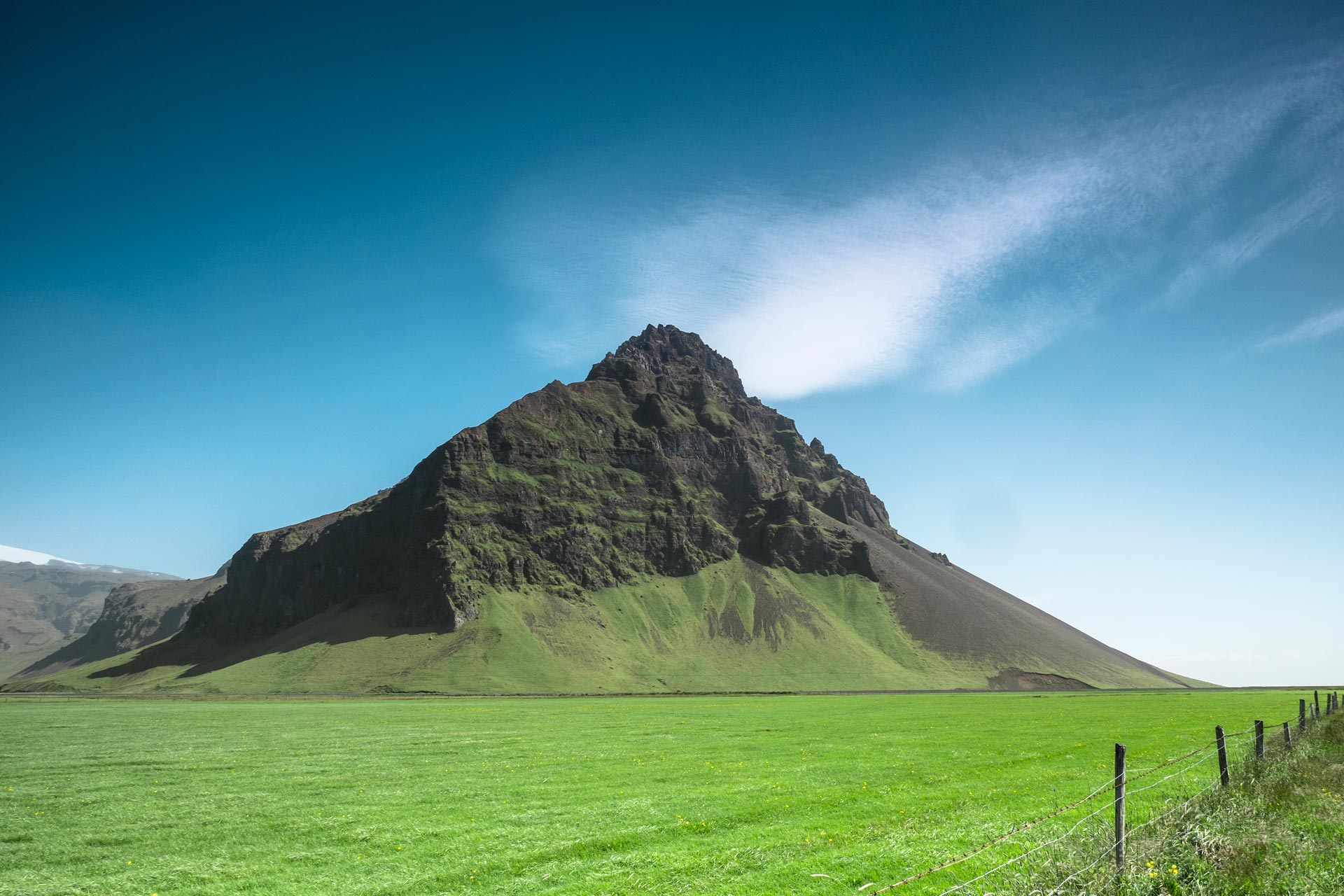
THE WAY THERE
THE ROUTE TO
HRÍFUNES NATURE PARK
The way from Reykjavík to Hrífunes contains plenty of variety, with lots to see and do and many reasons to break the journey. Southern Iceland is the country’s main agricultural area, which makes it easy to find fresh produce and many farmers sell directly from farm stalls. Products available in this way include veal, pork, beef, mutton and smoked trout (from Útey by the lake Laugarvatn, for example). Market gardening is practised on a considerable scale in and around Reykholt, Flúðir and Laugarás. There, and on many smaller farms in the south, it is often possible to buy tomatoes and strawberries the same day that they are picked; other products include potatoes, carrots, herbs, lettuces, swede turnips and other vegetables.
Restaurants serving locally-produced food have sprung up like mushrooms in recent years and dozens of them can now be found in Southern Iceland. One of these, Friðheimar in the Biskupstungur area, can be included in the trip to Hrífunes by making a short detour. The menu at Friðheimar is based largely on the tomatoes that are grown on site; many say its tomato soup is the best they have ever tasted, and the restaurant’s reputation has spread outside Iceland. It has been featured in numerous TV programmes. The café at Efstidalur is known for its home-made ice cream, and also for coffee and meals based on produce from the nearby farms. Both places are popular for refreshment stops, not least because they are close to the ‘Golden Circle’ sightseeing route, and many visitors to the country cite them as special experiences during their time in Iceland.
Barley has long been grown at Þorvaldseyri, just east of the village of Hvolsvöllur. Barley flour, rapeseed oil and whole-wheat flour can be bought there. Langholtskot, in Hrunamannahreppur, serves cuts of meat for all occasions, mince, goulash, hamburgers, marinated beef and many other varieties. At Fagridalur, just east of Vík í Mýrdal, anglers can have their catches smoked; for those not lucky with their rods, fillets of Arctic char and salmon are on sale, smoked, marinated or fresh, in addition to wind-dried legs of mutton.
There are more than ten golf courses and nearly twenty swimming pools in southern Iceland, so it is easy to break the journey to Hrífunes with some stops for exercise along the way. Many of the swimm-ing pools have recently been rebuilt and modernised; some also include gym facilities, such as the World Class gym attached to the pool in Selfoss. Almost all population centres in the area, both on the main road east to Hrífunes and in the interior of Árnes county, have swimming pools. The oldest pool in the country, Gamla laugin, in the village of Flúðir, harnesses water from a number of hot springs right on the edge of the pool, including a ‘Little Geysir’ which spouts at intervals of a few minutes. The open-air pool has been restored in its original form with the addition of a service centre with modern changing and washing facilities and a bar. A swim there – in any season – is a very special experience.
Several museums and exhibitions can be visited along the way, e.g. ‘Húsið,’ the historic factor’s house in Eyrarbakki; the Lava Centre (an exhibit about earthquakes and volcanoes) and the Saga Centre (both in Hvolsvöllur); small sale galleries; the Skógar Museum; occasional exhibitions at Sólheimar, the Commonwealth Farm (a replica of a Saga-Age Norse farm); the visitor centre Þjórsárstofa in Árnes and, in Vík í Mýrdal, Brydebúð, a country store built in 1895, and Skaftfellingur, a boat built in 1918 to move people and goods along the Southern coast when inland there were neither roads nor bridges.
THE ROUTE TO
HRÍFUNES NATURE PARK
The way from Reykjavík to Hrífunes contains plenty of variety, with lots to see and do and many reasons to break the journey. Southern Iceland is the country’s main agricultural area, which makes it easy to find fresh produce and many farmers sell directly from farm stalls. Products available in this way include veal, pork, beef, mutton and smoked trout (from Útey by the lake Laugarvatn, for example). Market gardening is practised on a considerable scale in and around Reykholt, Flúðir and Laugarás. There, and on many smaller farms in the south, it is often possible to buy tomatoes and strawberries the same day that they are picked; other products include potatoes, carrots, herbs, lettuces, swede turnips and other vegetables.
Restaurants serving locally-produced food have sprung up like mushrooms in recent years and dozens of them can now be found in Southern Iceland. One of these, Friðheimar in the Biskupstungur area, can be included in the trip to Hrífunes by making a short detour. The menu at Friðheimar is based largely on the tomatoes that are grown on site; many say its tomato soup is the best they have ever tasted, and the restaurant’s reputation has spread outside Iceland. It has been featured in numerous TV programmes. The café at Efstidalur is known for its home-made ice cream, and also for coffee and meals based on produce from the nearby farms. Both places are popular for refreshment stops, not least because they are close to the ‘Golden Circle’ sightseeing route, and many visitors to the country cite them as special experiences during their time in Iceland.
Barley has long been grown at Þorvaldseyri, just east of the village of Hvolsvöllur. Barley flour, rapeseed oil and whole-wheat flour can be bought there. Langholtskot, in Hrunamannahreppur, serves cuts of meat for all occasions, mince, goulash, hamburgers, marinated beef and many other varieties. At Fagridalur, just east of Vík í Mýrdal, anglers can have their catches smoked; for those not lucky with their rods, fillets of Arctic char and salmon are on sale, smoked, marinated or fresh, in addition to wind-dried legs of mutton.
There are more than ten golf courses and nearly twenty swimming pools in southern Iceland, so it is easy to break the journey to Hrífunes with some stops for exercise along the way. Many of the swimm-ing pools have recently been rebuilt and modernised; some also include gym facilities, such as the World Class gym attached to the pool in Selfoss. Almost all population centres in the area, both on the main road east to Hrífunes and in the interior of Árnes county, have swimming pools. The oldest pool in the country, Gamla laugin, in the village of Flúðir, harnesses water from a number of hot springs right on the edge of the pool, including a ‘Little Geysir’ which spouts at intervals of a few minutes. The open-air pool has been restored in its original form with the addition of a service centre with modern changing and washing facilities and a bar. A swim there – in any season – is a very special experience.
Several museums and exhibitions can be visited along the way, e.g. ‘Húsið,’ the historic factor’s house in Eyrarbakki; the Lava Centre (an exhibit about earthquakes and volcanoes) and the Saga Centre (both in Hvolsvöllur); small sale galleries; the Skógar Museum; occasional exhibitions at Sólheimar, the Commonwealth Farm (a replica of a Saga-Age Norse farm); the visitor centre Þjórsárstofa in Árnes and, in Vík í Mýrdal, Brydebúð, a country store built in 1895, and Skaftfellingur, a boat built in 1918 to move people and goods along the Southern coast when inland there were neither roads nor bridges.



